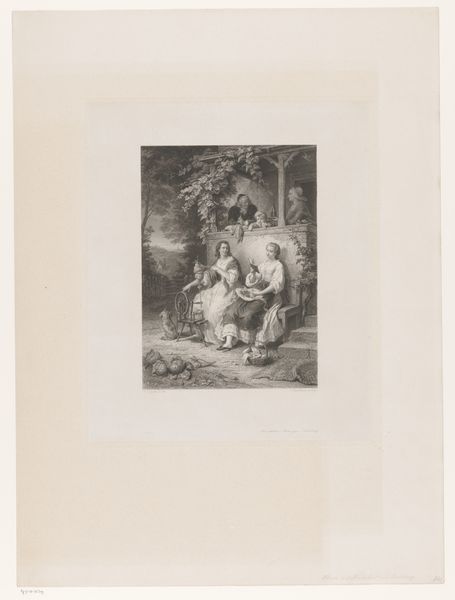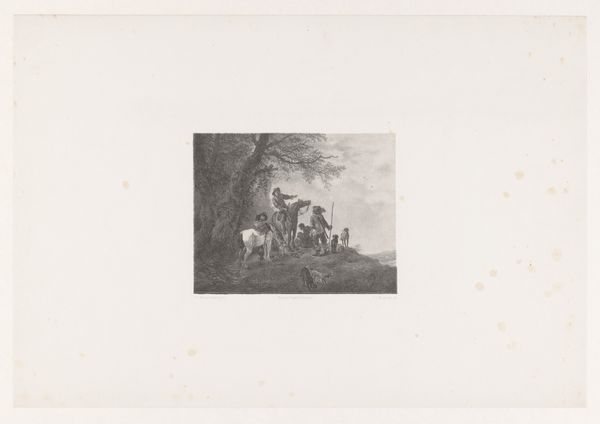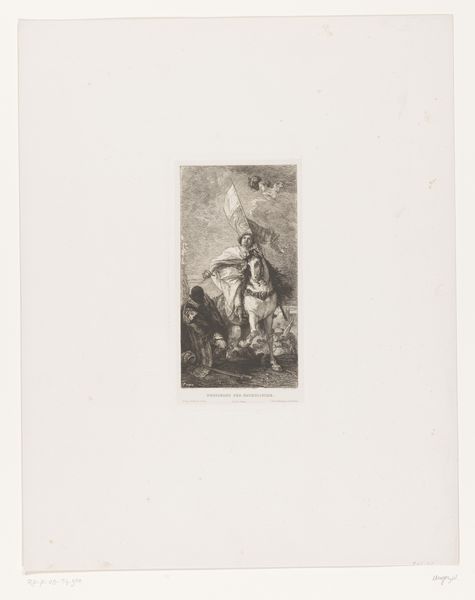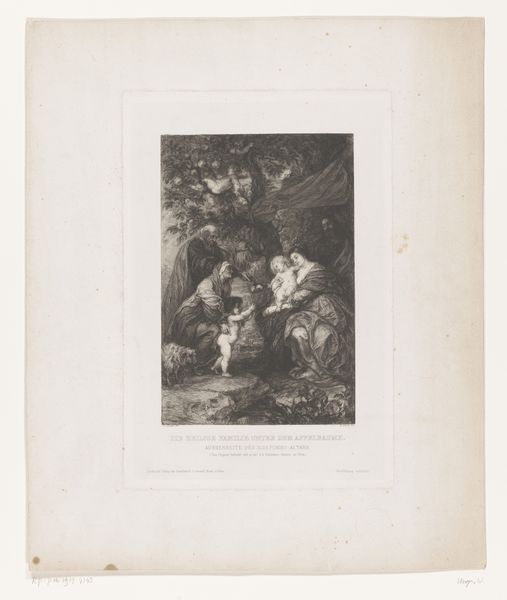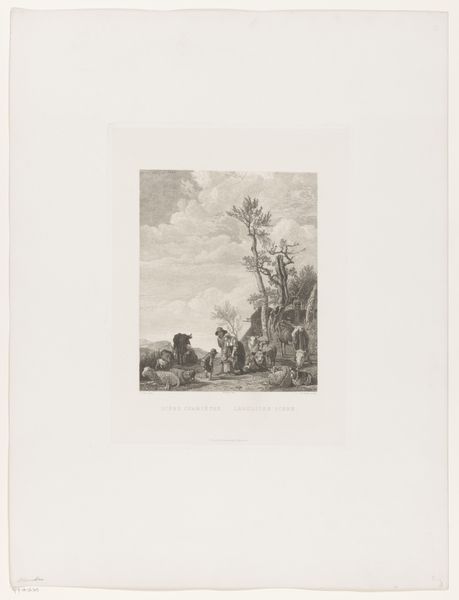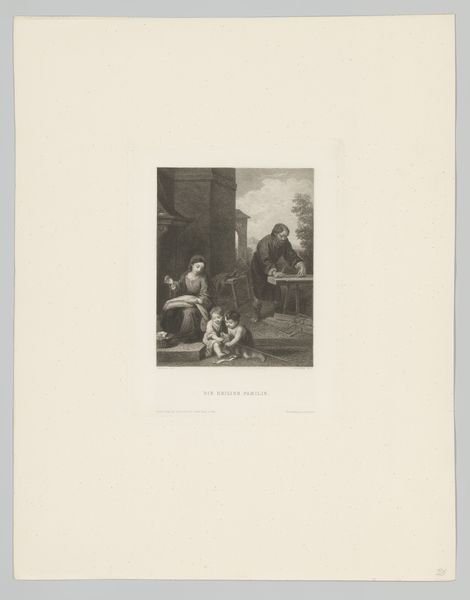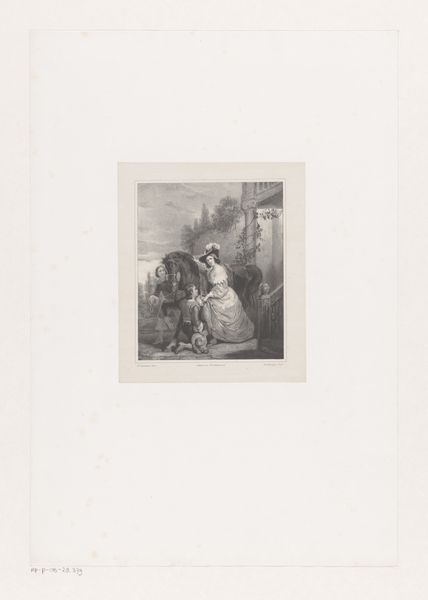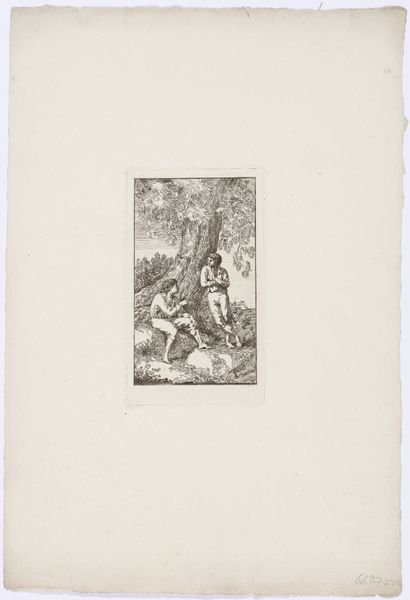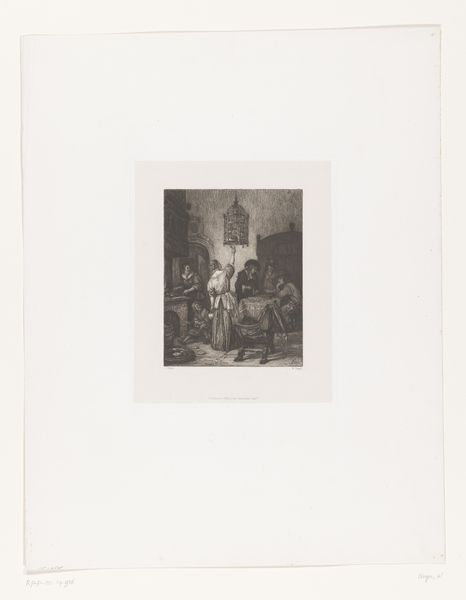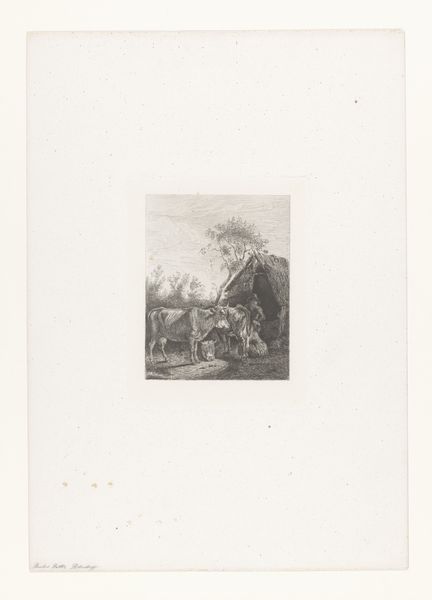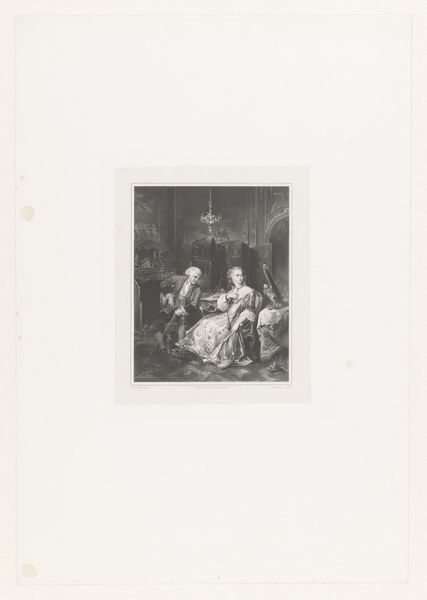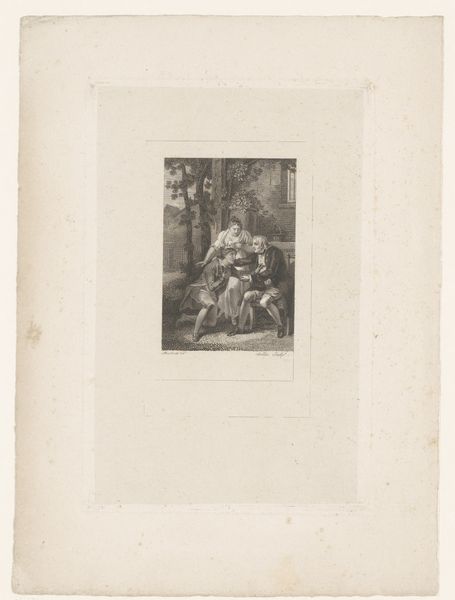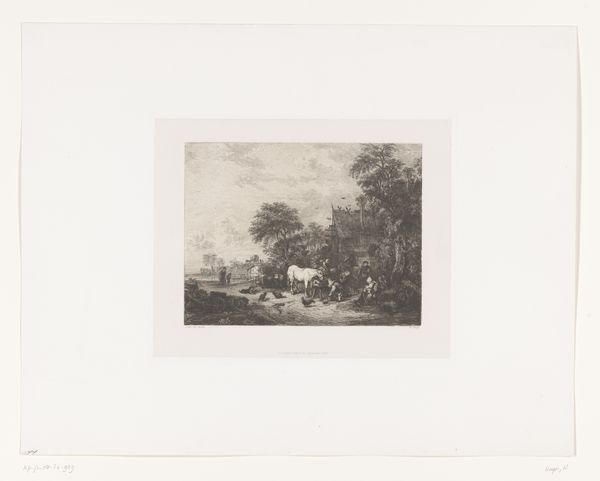
drawing, print, etching, paper, ink
#
drawing
#
16_19th-century
#
dutch-golden-age
# print
#
etching
#
paper
#
ink
#
genre-painting
#
realism
Dimensions: height 248 mm, width 178 mm
Copyright: Rijks Museum: Open Domain
Editor: So, this is *De Kwakzalver*, or *The Quack*, a print made by William Unger between 1847 and 1889. The etching is pretty small, but the detail he achieves is incredible. It feels like we're peering into a busy scene from a completely different world. What stands out to you the most about its formal qualities? Curator: Notice how Unger orchestrates the light. See the dramatic contrast and intricate use of hatching to build form? He masterfully uses dark ink to sculpt three-dimensional figures from a two-dimensional surface. Consider, too, how he creates depth, leading the eye into the scene using size and overlapping forms, even despite the limited contrast available in an etching. How does this linear perspective contribute to the narrative? Editor: The linear perspective definitely pulls me in! And now that you mention it, I see how the size of the figures helps to create depth within the composition. Also, look how the darkest lines are focused on the figures right around the table, practically spotlighting them! Does the limited palette enhance or detract from the artwork, in your opinion? Curator: That very constraint is, paradoxically, its strength. Notice how Unger manipulates a grayscale palette to convey texture and volume. The interplay of light and shadow becomes the primary mode of expression, demanding a closer reading of the graphic marks themselves. The absence of color allows us to focus on line, form, and composition. The question remains, how does the lack of color influence the viewer's perception of realism? Editor: It’s true. The etching's realism hinges on those formal techniques, making the scene jump out at you regardless. It shows that, even without a burst of color, a piece can be immensely impactful. Curator: Precisely. It shows how attention to formal structure generates evocative aesthetics.
Comments
No comments
Be the first to comment and join the conversation on the ultimate creative platform.
